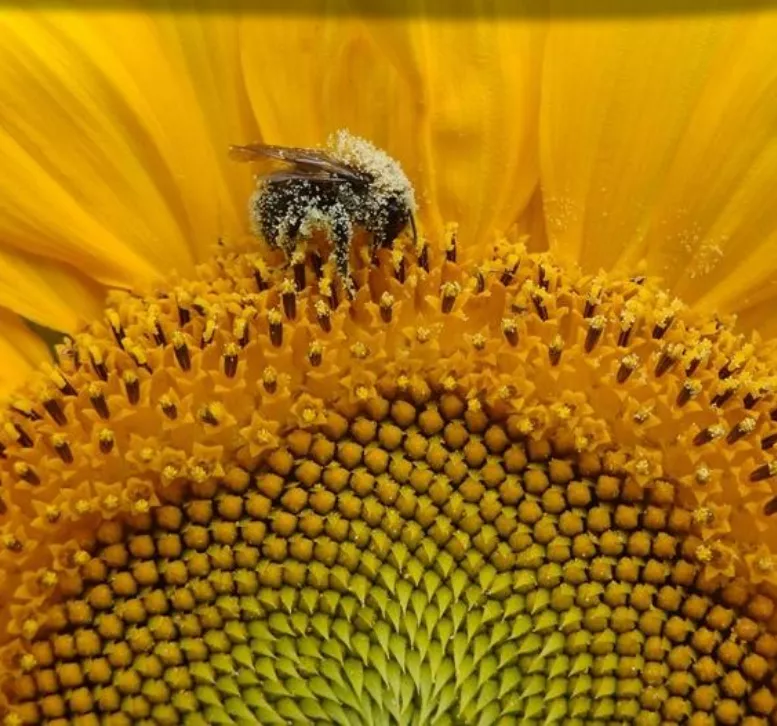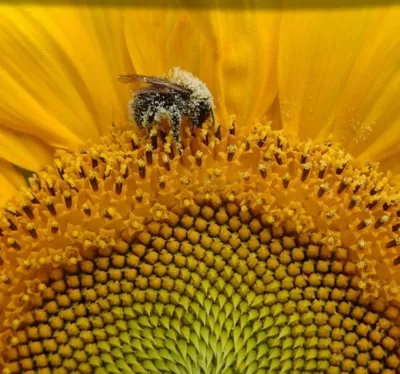Summary
The ‘Green Circles’ approach is a methodology of bringing together stakeholders to create a network of actors committed to addressing specific sustainability or biodiversity challenges.
Since 2013, seven thematic ‘Green Circles’ have been established in the province of South Holland. These networks comprise innovative companies, research institutions, governmental bodies and civil society organisations.
Their collaborative efforts begin with a ‘dream session’, during which participants are guided to reflect on common challenges and generate potential ideas to tackle them. Based on the outcomes, concrete projects are developed and stakeholder commitments are organised.
‘Green Circles Bee Landscape’ was one of the first ‘Green Circles’ and, up to now, one the most successful. With the cooperation of 50 organisations, the initiative has exponentially increased the number of bees in the region, improved ecosystem biodiversity and led to the creation of several companies that handle the biomass resulting from management of public green spaces in 15 municipalities.
Results
- The initiative has led to an overall increase in the number of wild bee species in the area monitored, rising from 69 to 97, indicating more robust ecosystems.
- The management of biodiversity in public green areas is now an integral part of policy in the participating municipalities, including public procurement procedures.
- Since the project's inception, the network of organisations has grown to 50 members, expanding the initiative's coverage from four municipalities in 2015 to 15 by 2023.
- The province of South Holland has committed ongoing funding and tasked the environmental service body for the western part of the province with formulating a strategy to create an interconnected bee landscape encompassing the province’s entire territory by 2030.
- As a spin-off, new private companies have emerged to use the biomass resulting from management of public green spaces to develop and market biobased products. One such company, Waardewenders, was established by a printing company and a local dairy farmer. On the farm, biomass is processed to make it suitable for paper production which is later used by the printing company.
- Additionally, the 'Green Circles Bee Landscape' project has given rise to a new regional biomaterials network comprising local companies and farms, known as the Grondstoffen Collectief Rijnland.
Resources
Documents
Context
The Green Circles movement first emerged in 2013 as a partnership between the Heineken brewery and local farmers, aimed at enhancing the brewery's sustainability and resilience to climate change. Green Circles Bee Landscape launched in 2015 across five municipalities, encompassing both urban (e.g. the city of Leiden) and rural areas (such as Zoeterwoude, Kaag en Braassem and Alphen aan den Rijn). The region involved is characterised by peatland located below sea level and it faces rural challenges related to climate change-induced unpredictable weather and rising sea levels. The oxidation of peatland results in greenhouse gas emissions and ongoing soil subsidence, averaging 2 centimetres per year. Intensified agriculture and urbanisation have led to a loss of biodiversity. Farmers are exploring ways to improve sustainability while maintaining economic viability through engagement in new economic activities. The Green Circles Bee Landscape project was established by the Omgevingsdienst West Holland to address these issues, with a particular focus on providing tangible and practical solutions to enhance biodiversity and underscore its significance for the future of food production.
Objectives
To improve the local and regional ecosystem by making insects the focal point for activities and through these to increase biodiversity as a pivotal point for soil health and food sustainability. Wild bee species are the main actors in this approach because of the important role they play in pollinating food crops. To attract them and safeguard their function, the project also aims to create an attractive living environment full of flowers.
Activities,key actors, and timeline
The initiative started by establishing and overseeing a network of interconnected habitats for insects across various plots of land in the area, thereby creating the necessary ecosystem. The primary responsibility lies with municipalities, which manage public green spaces such as roadsides. Private landowners, including farmers, also play a role by employing more biodiverse grassland mixtures or sowing bee-friendly flower seeds along the edges of their fields. Another significant activity undertaken, led by Wageningen University and the National Insects Expert Centre, was the establishment of a helpdesk to provide information on biodiversity management. Once the network was established and information dissemination began, partner organisations, sometimes with the involvement of citizen groups, received support to implement specific local actions. Some examples of actions include:
- Installation of ‘bee hotels’, simple structures providing breeding spaces for certain bee species, in the town of Boskoop.
- Creation of 'bee highways' by several farmers sowing bee-friendly flower mixtures along the borders of their fields. These farmers are members of De Groene Klaver, an association for agriculture and biodiversity management in the Leiden area.
- Establishment of bee-friendly zones within the Grote Polder industrial estate in Zoeterwoude.
-
Development of bee-friendly school playgrounds within the municipality of Alphen aan den Rijn.
Lastly, every three years an evaluation is conducted by the National Insects Expert Centre, based on the monitoring of various activities.
Success factors/lessons learnt
The initiative's success can be attributed to its pragmatic approach, prioritising practical solutions using the Green Circle methodology, and the choice of the wild bee as a symbol resonating with the local population. Effective coordination, facilitated by a central point, ensured seamless information exchange among partners, harnessing their diverse expertise. Notably, all partners, regardless of their size, urban or rural nature, or role, were equally valued. Rigorous monitoring conducted by academic experts bolstered the initiative's credibility, underpinning its overall success.
A valuable lesson learned is the importance of aligning the approach and activities with stakeholders' policies and strategies to secure a long-term commitment to biodiversity management.
Contacts
Annette Piepers, programme manager A.Piepers@odwh.nl

